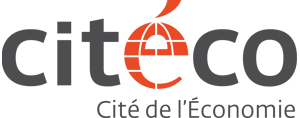How do companies organise their production, manage labour relations, find sources of financing, implement strategies for development? Are the answers to these daily challenges comparable for a start-up, a restaurant, a food retailer, the largest market in France, an industrial company, a company that introduced embedded donations in France?
The sixth and final video in our "Life in business" series gives you the chance to immerse yourself in the life of a large company. SEMMARIS operates the largest fresh produce market in the world: Rungis, near Paris.
Who are the stakeholders of this semi-public company (public entities, private firms, employees, supervisory bodies, etc.)? What challenges must it meet on a day-to-day basis (particularly in terms of logistics and hygiene) and in the longer term (expanding into e-commerce, internationalisation, etc.)? Find out the answers to these questions in a joint interview with the CEO of SEMMARIS and his Market and Human Resources Director.
Source: Banque de France – Citéco/la Cité de l’économie et de la monnaie
Audience: 12+
Language: english
Lenght: 4’03
Watch the other episodes of this series of 6 videos:
- A neighbourhood store
- A start-up
- An exporting company
- A socially responsible company
- A very small business
Published on 30 August 2017. Updated on 20 February 2024
